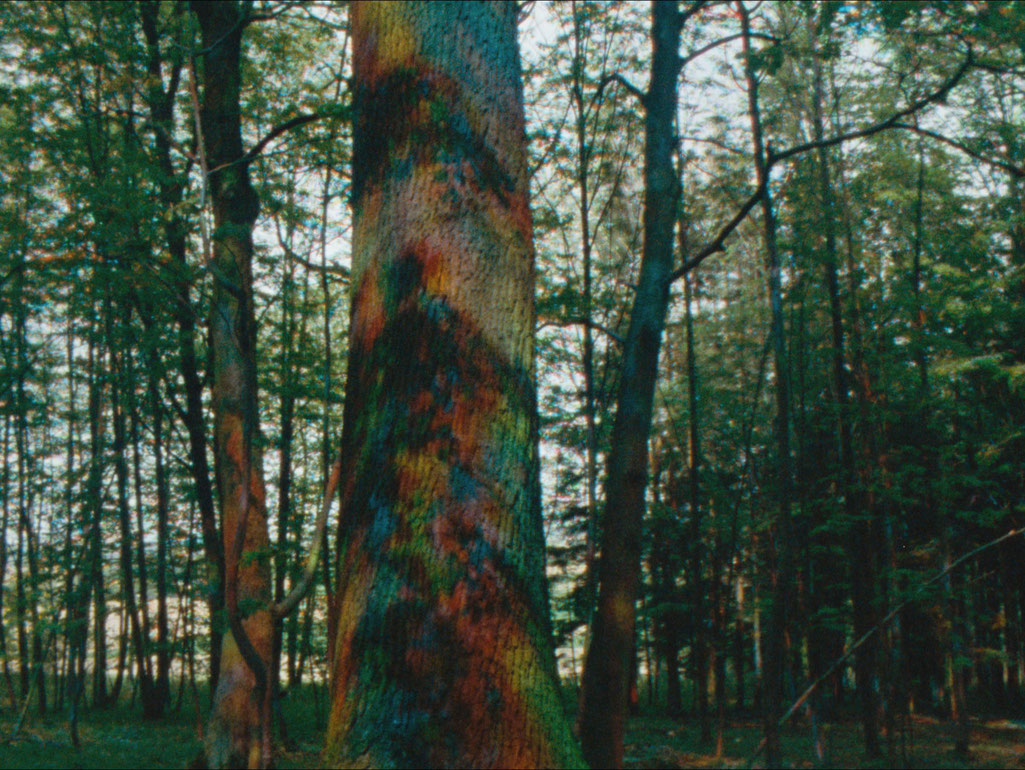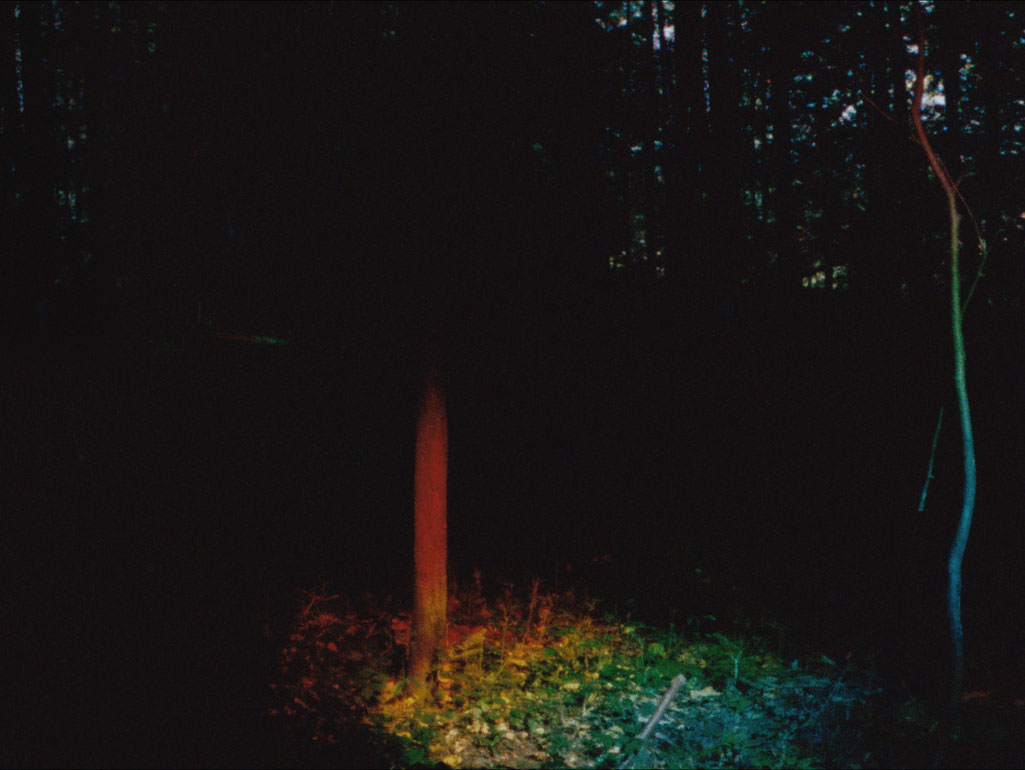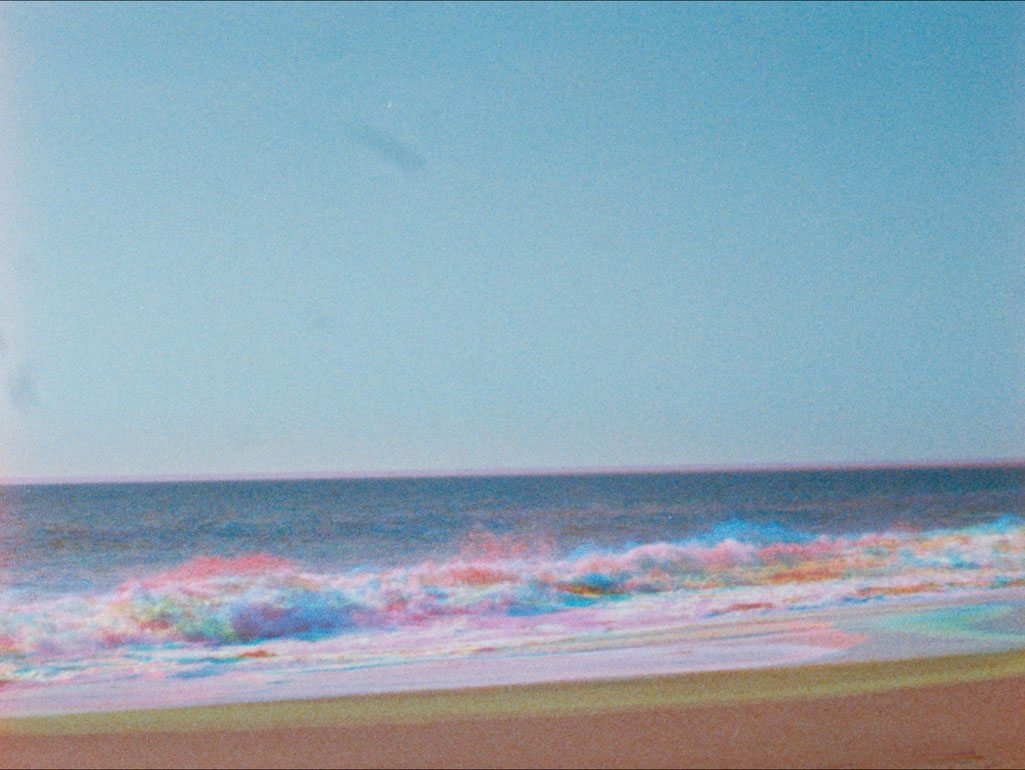Rojo Žalia Blau
Three locations, filmed over an extended period of time: Spain, a Baltic Sea resort in Lithuania, and a forest in Lower Austria. While in the filmmaker’s earlier work, NYC RGB, the skyscrapers of the New York skyline are perceived as tricolor mountain ranges, and the camera surveys a distinct landscape conceived by architects, Rojo Žalia Blau expands the perception of landscape and its representation, questioning what we understand as a “natural” space. Shadows shift, and seemingly unreal color palettes open up like lush bouquets of flowers or shimmering rainbows. A mountain guide who stands at a summit already knows every mountain by name; but in this case, our view is different: the trees and beaches in Rojo Žalia Blau remain anonymous, and the way in which we see and hear nature, as we remember and perceive it, are sharpened.
Viktoria Schmid expands her reconstructions of analog color systems with an homage to glorious Technicolor. She shoots with 16mm color negative film, running it three times through a Bolex camera and exposing it each time through different filters – red, green, and blue. The three layers of color – and time – are recorded one on top of the other and precisely synchronized. In this way, three different spans of time are transformed into a new, fictional film time, which finally elapses only when the film is projected.
Meanwhile, the soundtrack also blends the locations into a distinct auditory art-time. An artificial soundscape was recreated from field recordings – both recorded on location and supplemented by others. Here, too, Schmid maintains the strategy of fiction within the natural, creating a game of hide and seek played out in RGB. Rojo Žalia Blau evokes the essence of experimental cinema, so listen and watch closely! (Marius Hrdy)
Translation: John Wojtowicz
Erste Bank Filmpreis/ Erste Bank Film Award, Viennale 2025 (Award)
Jury Statement:
Viktoria Schmid’s ROJO ŽALIA BLAU is a landscape study – shot in the forests and seasides of Spain, Lithuania, and Lower Austria – that utilizes a simple but evocative technique: color separation photography (the basis of golden age Hollywood’s Technicolor process), by which the same scene is filmed in black-and-white using three different color filters, and then printed through the same filters, resulting in a full spectrum of visible color. But by shooting the same strip of film three successive times – rather than simultaneously, as in the manner of “true” Technicolor – Schmid is able to conjure an extraordinary, uncanny visual experience in which the colors drift in and out of sync depending on the degree of movement within the landscape or between the shots. The film’s technique is far more than a formal experiment: it becomes essentially a way of photographing time, with three different temporalities layered into a single (intoxicating) image and made visible only due to the movement produced by wind, wave, sun, and shadow. Achieving an astonishing fusion of color, motion, time, and philosophical inquiry, ROJO ŽALIA BLAU also holds a special resonance in an era in which it has become particularly important to explore the space that exists between “truth” and the image. (Silvia Bohrn, Nicolas Mahler, Boris Manner, Jed Rapfogel)
Rojo Žalia Blau
2025
Austria
10 min





